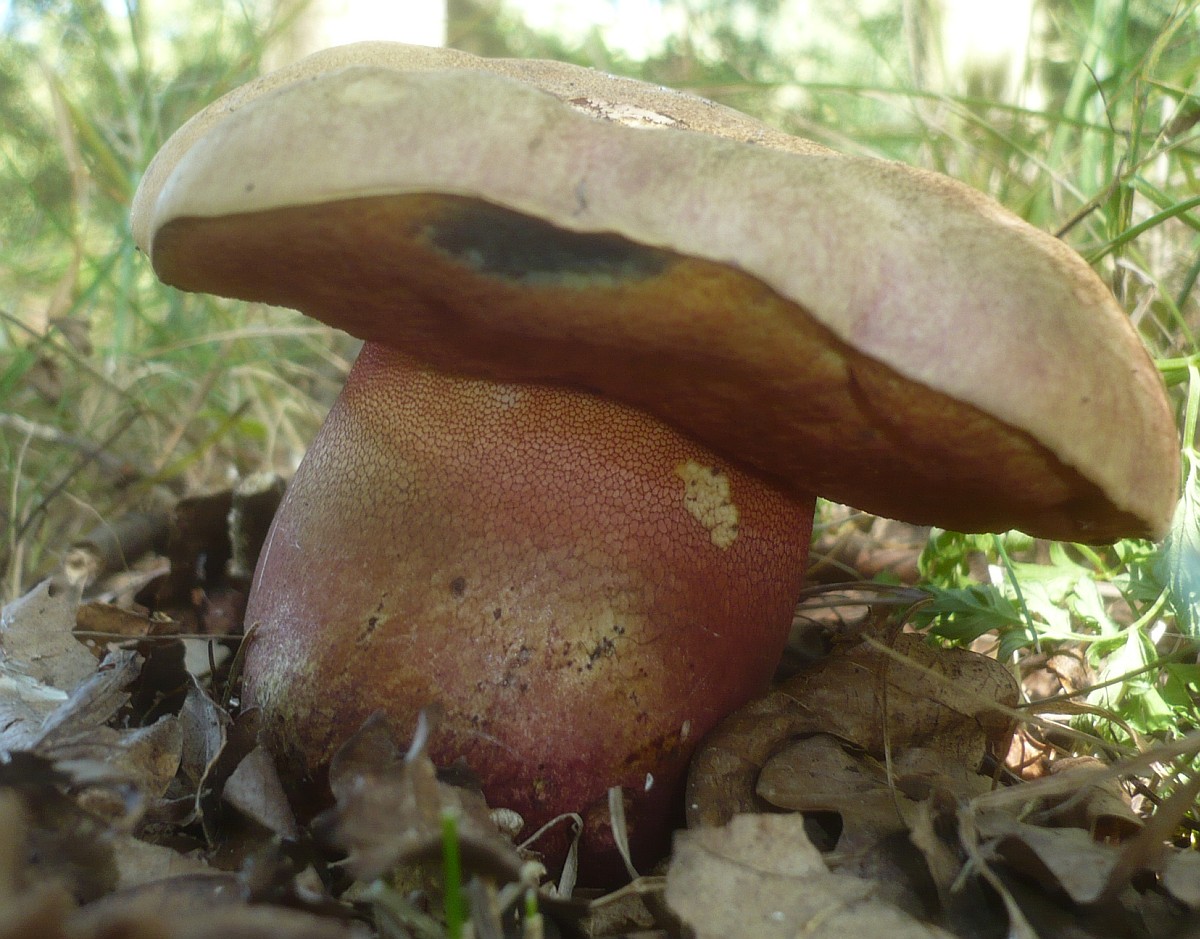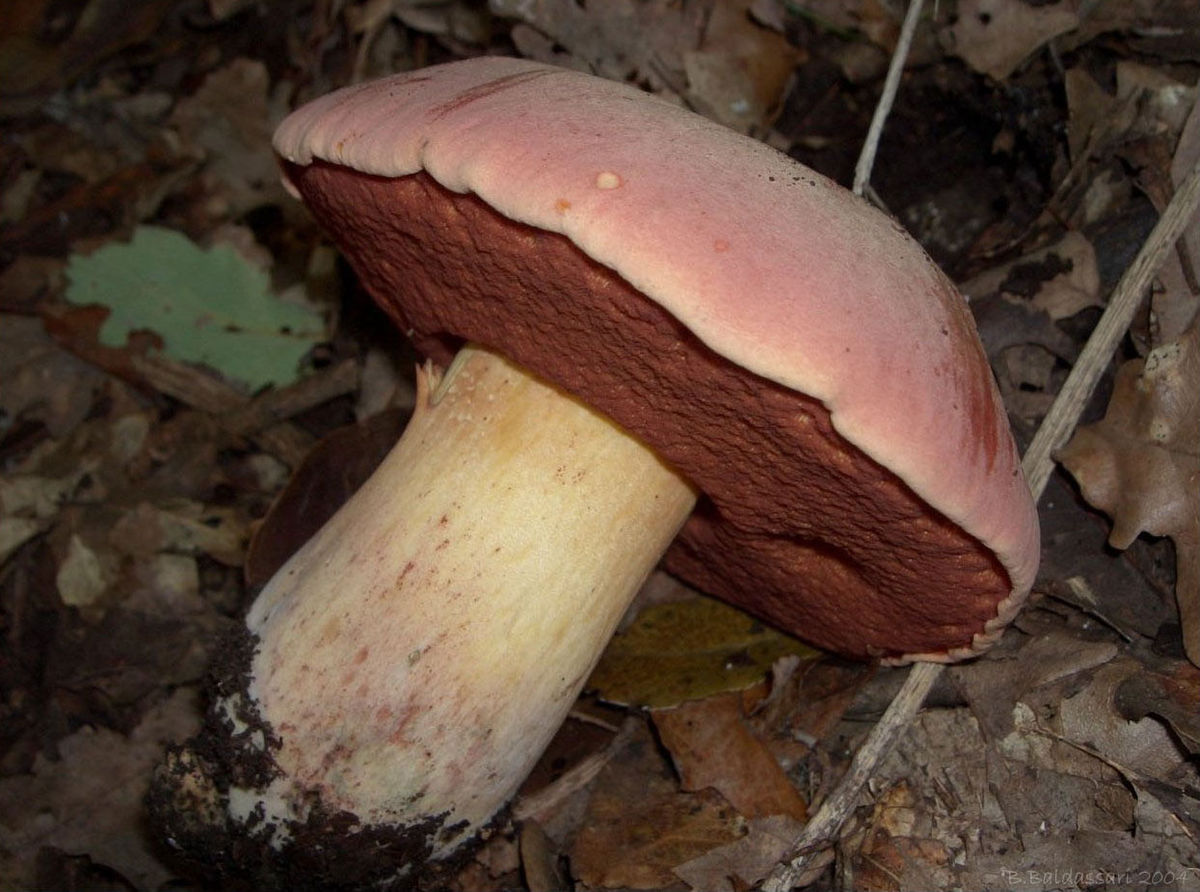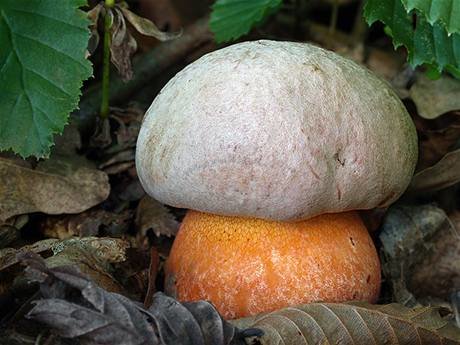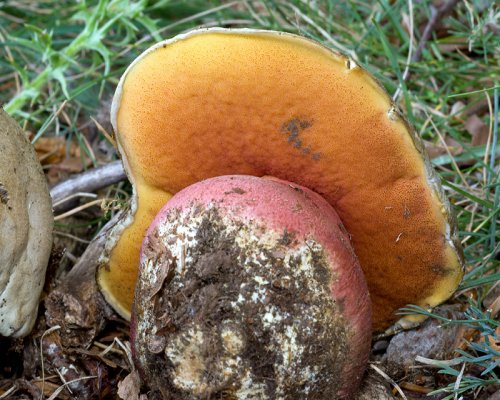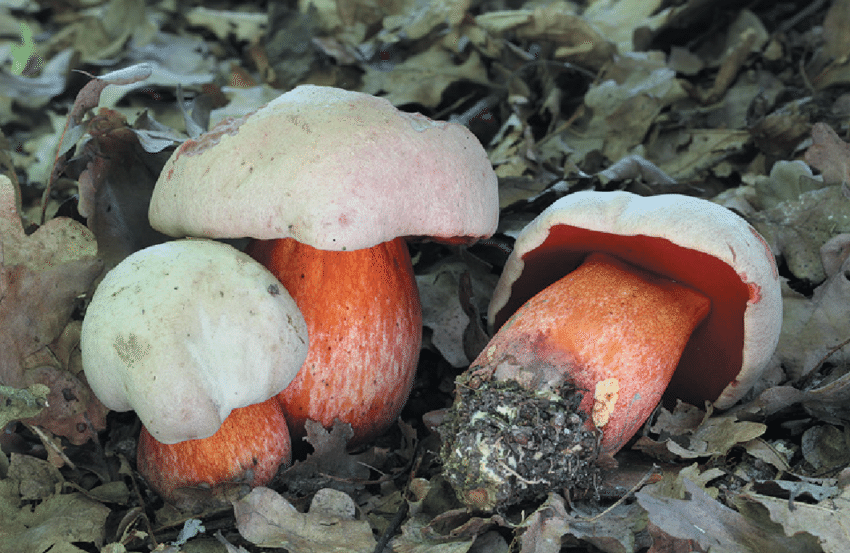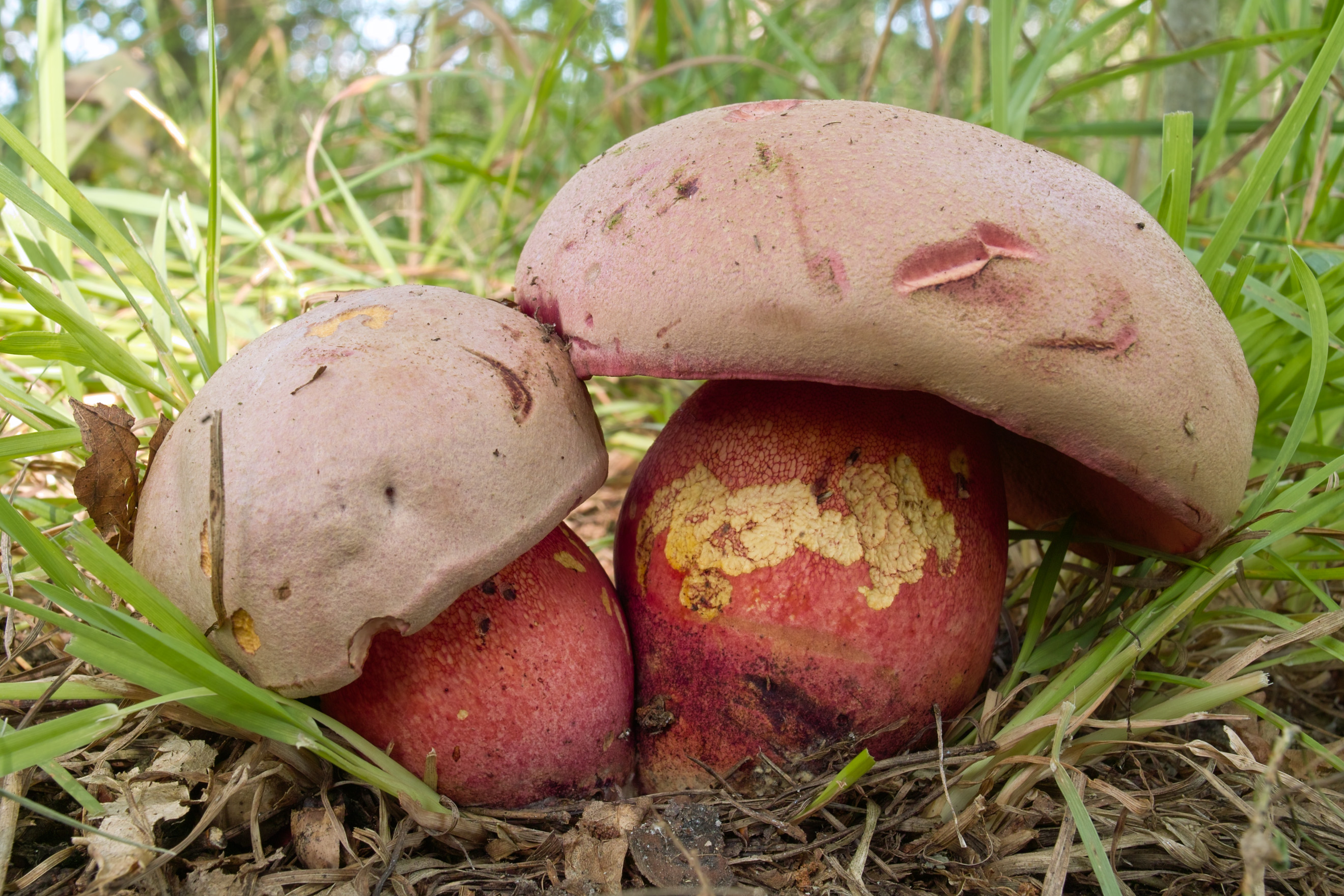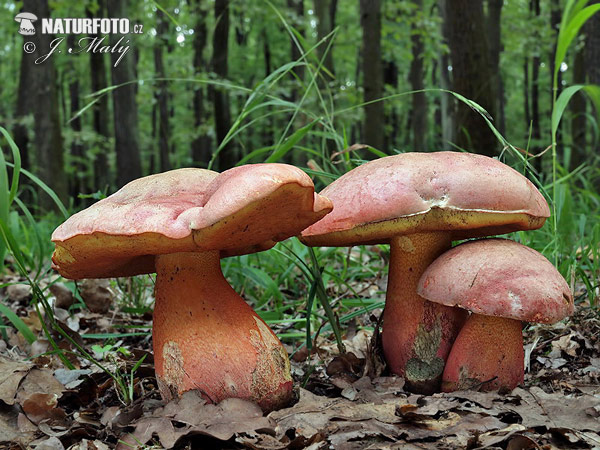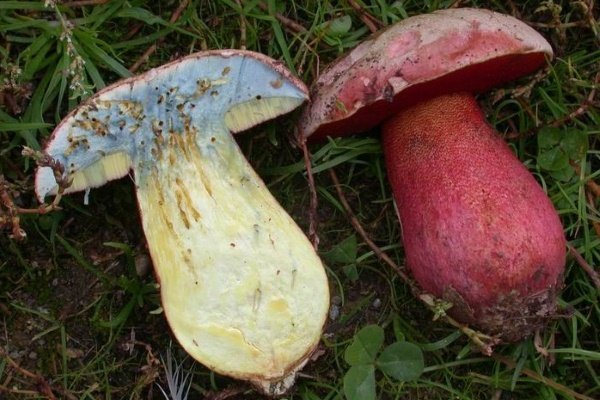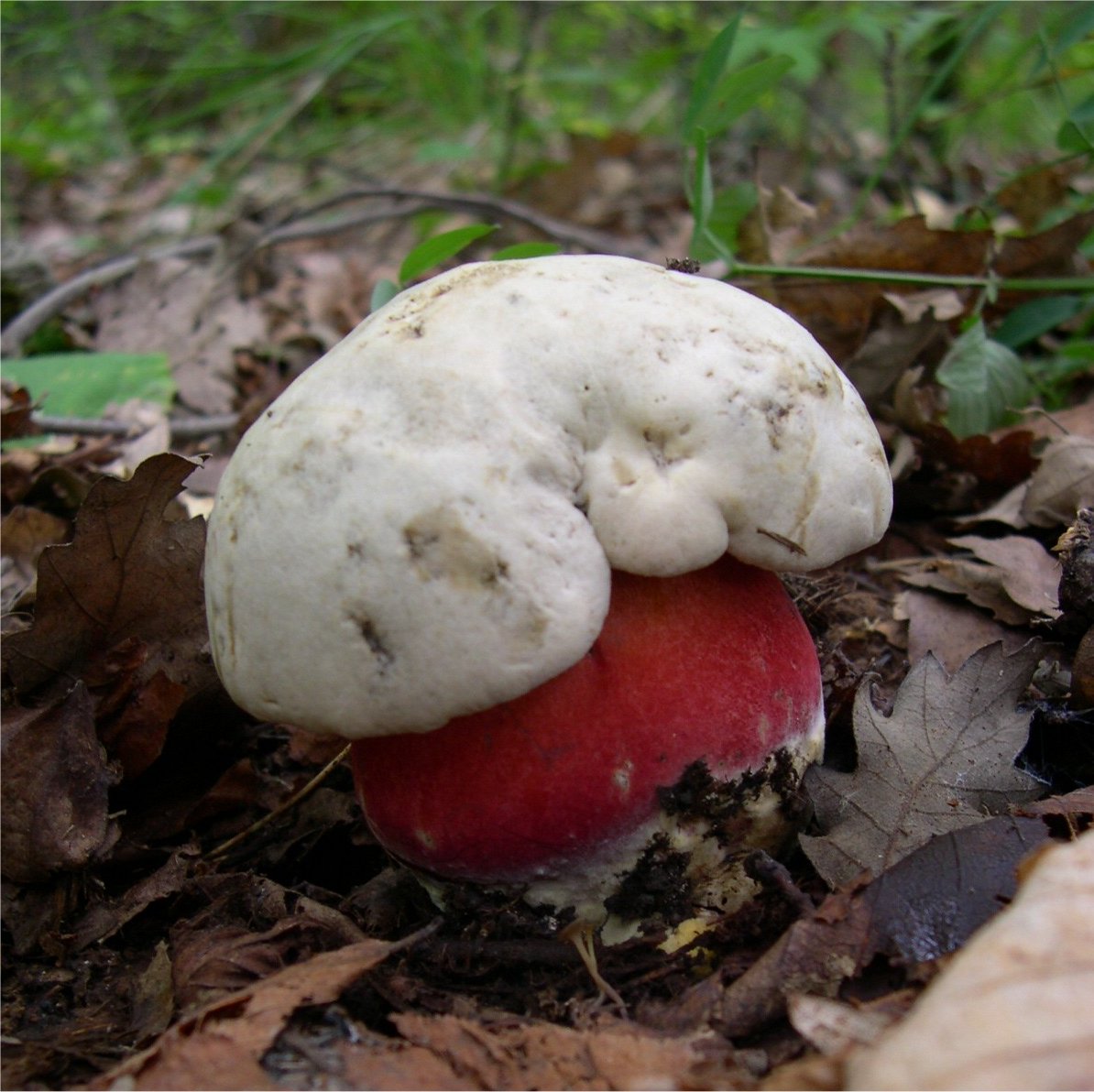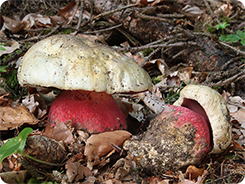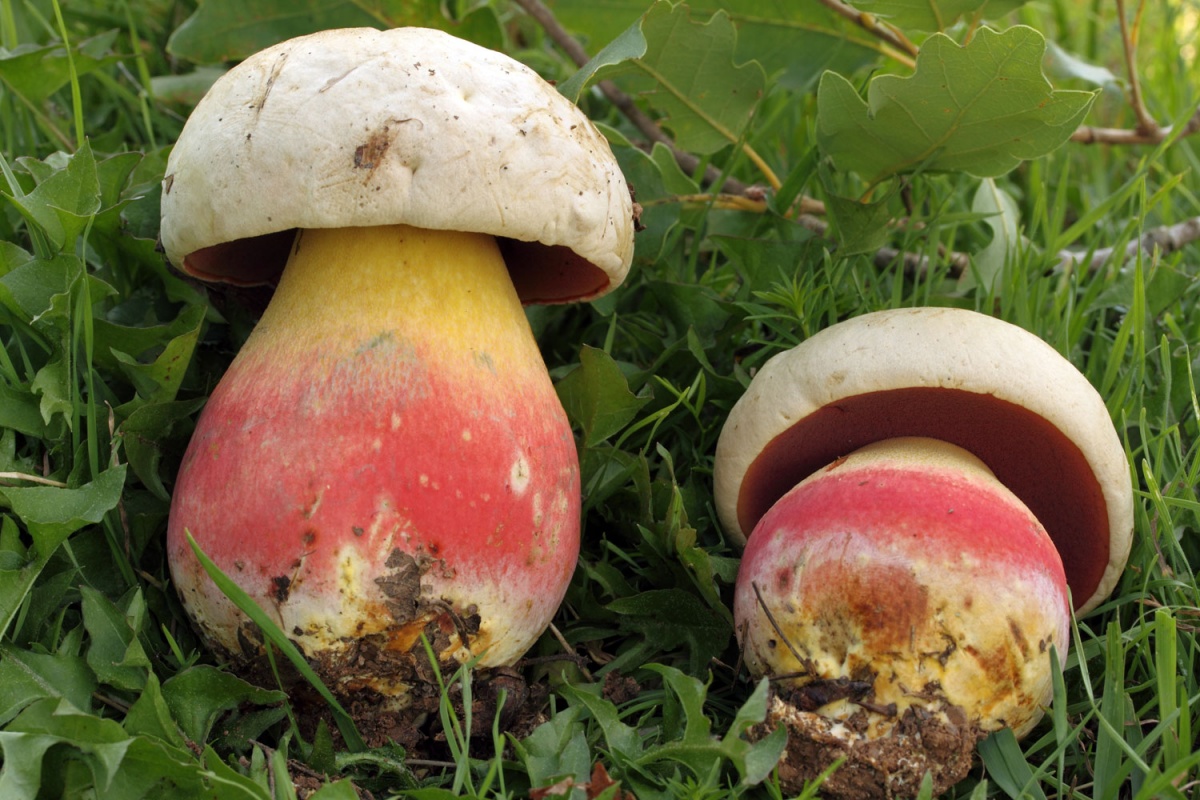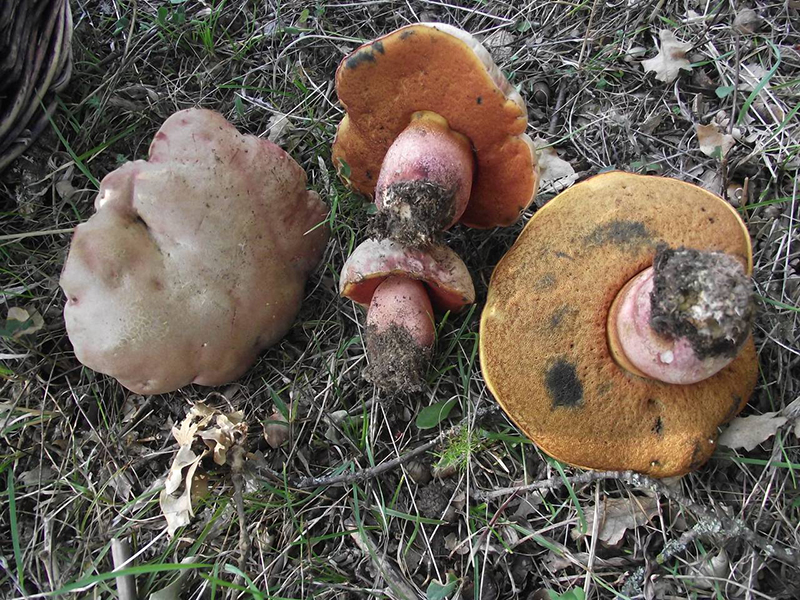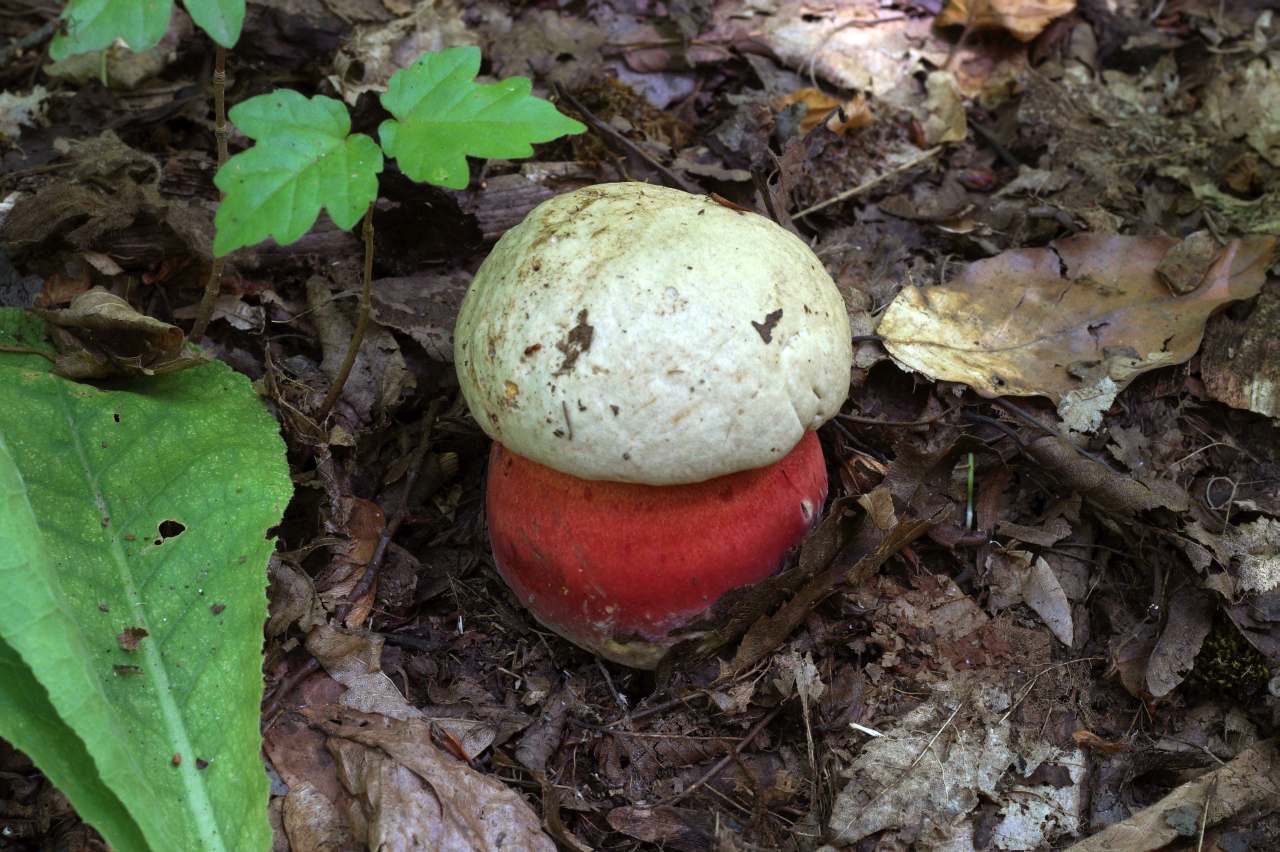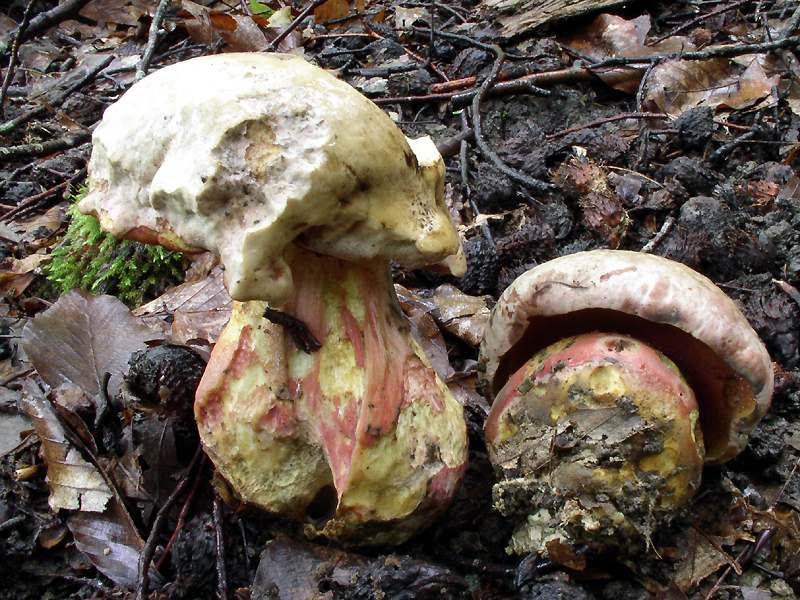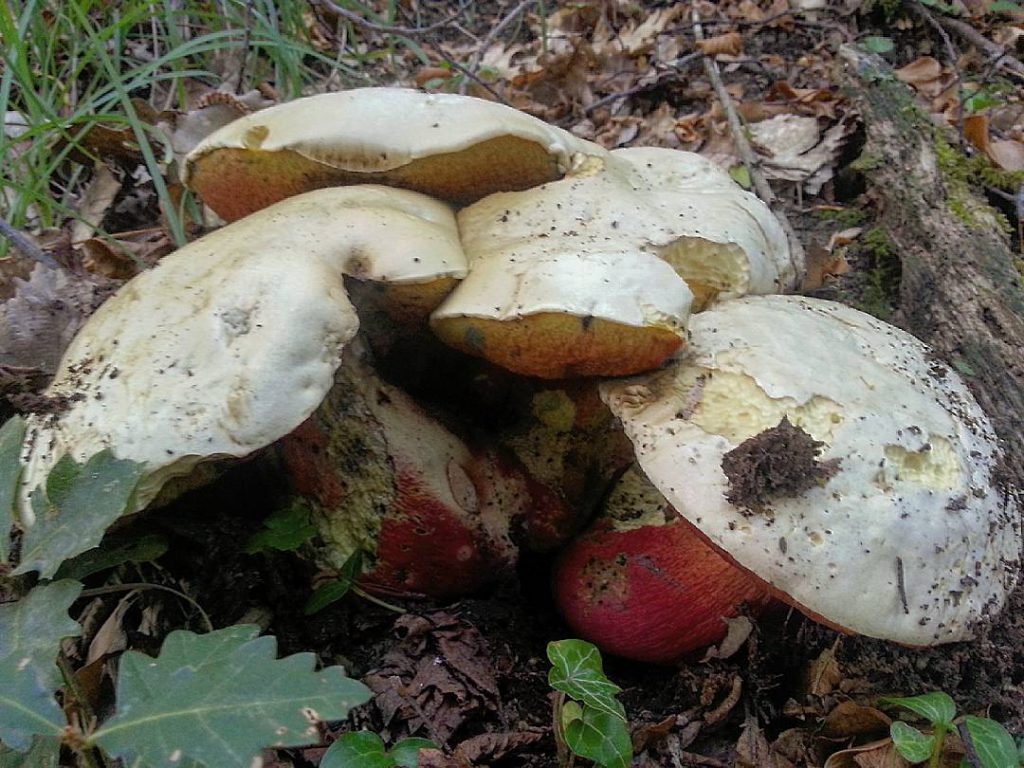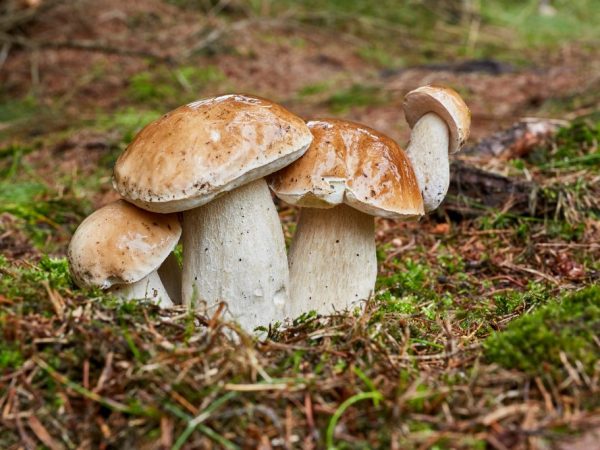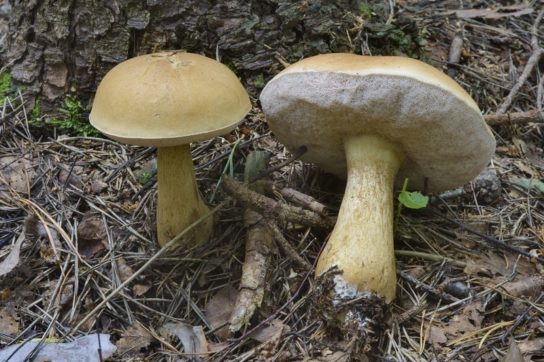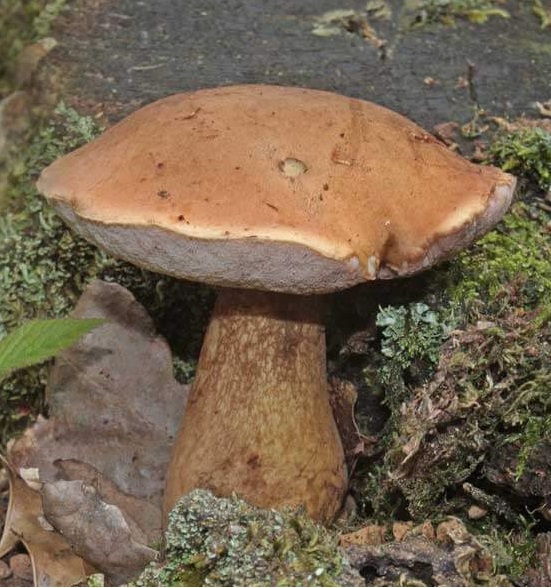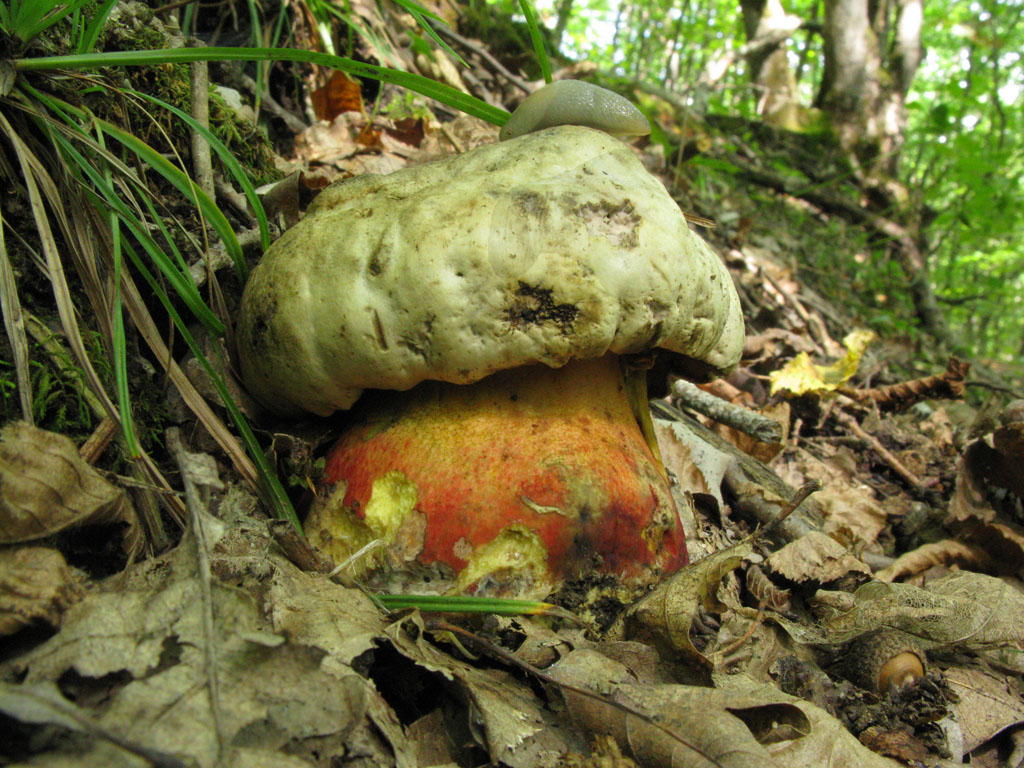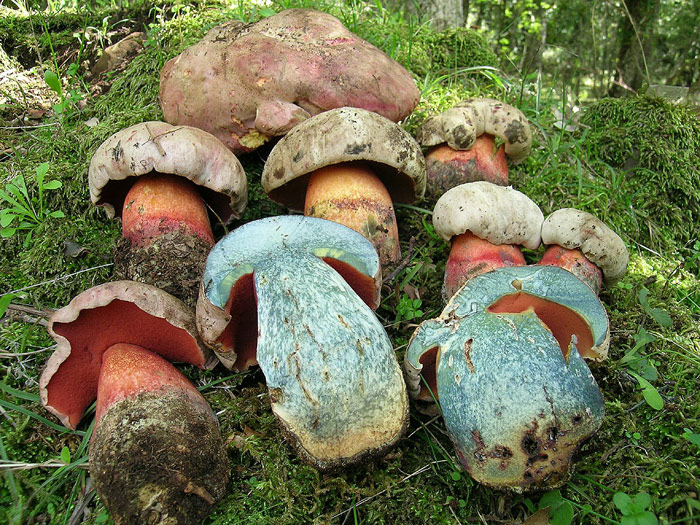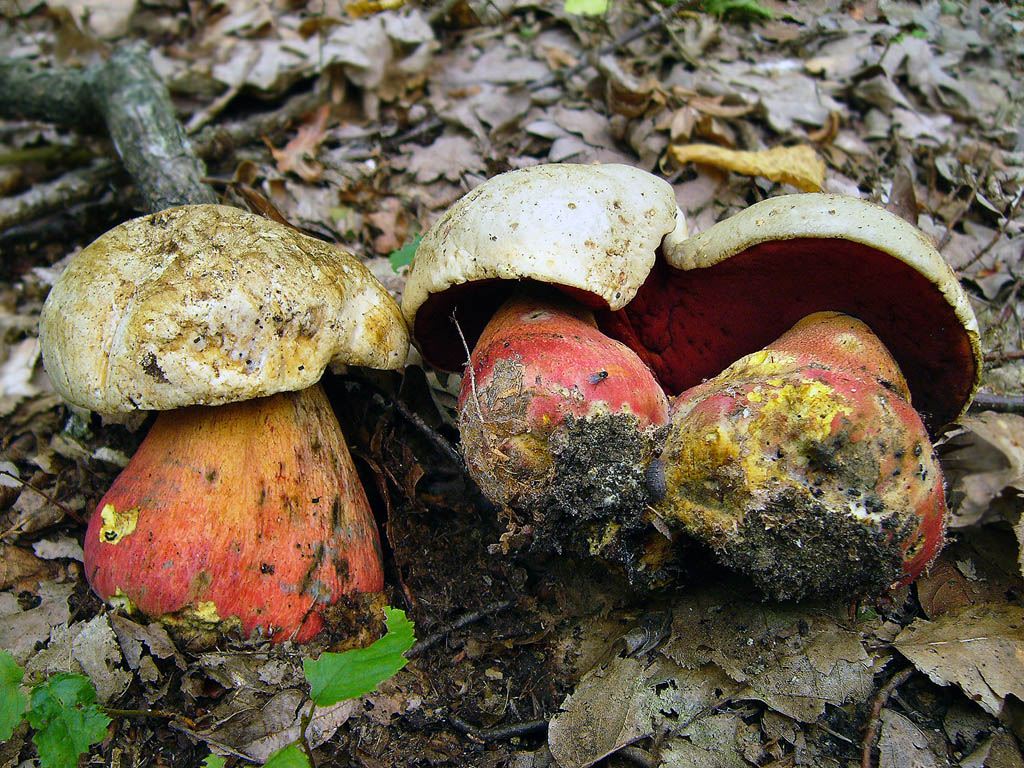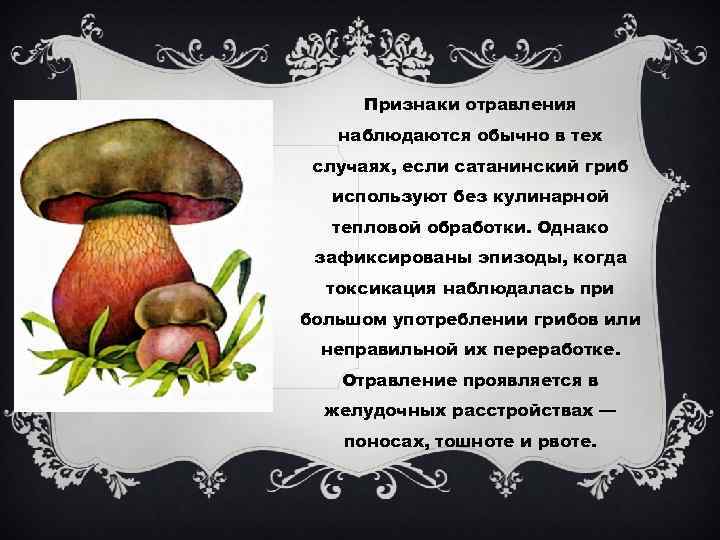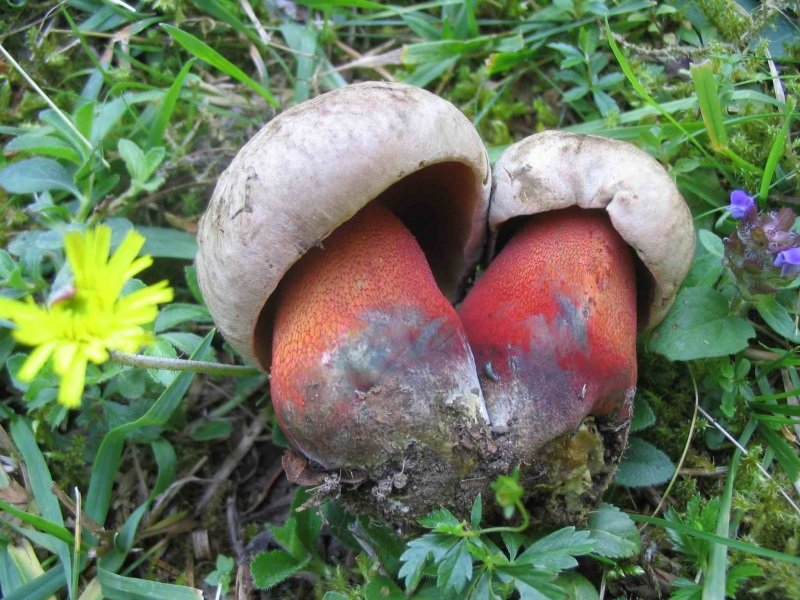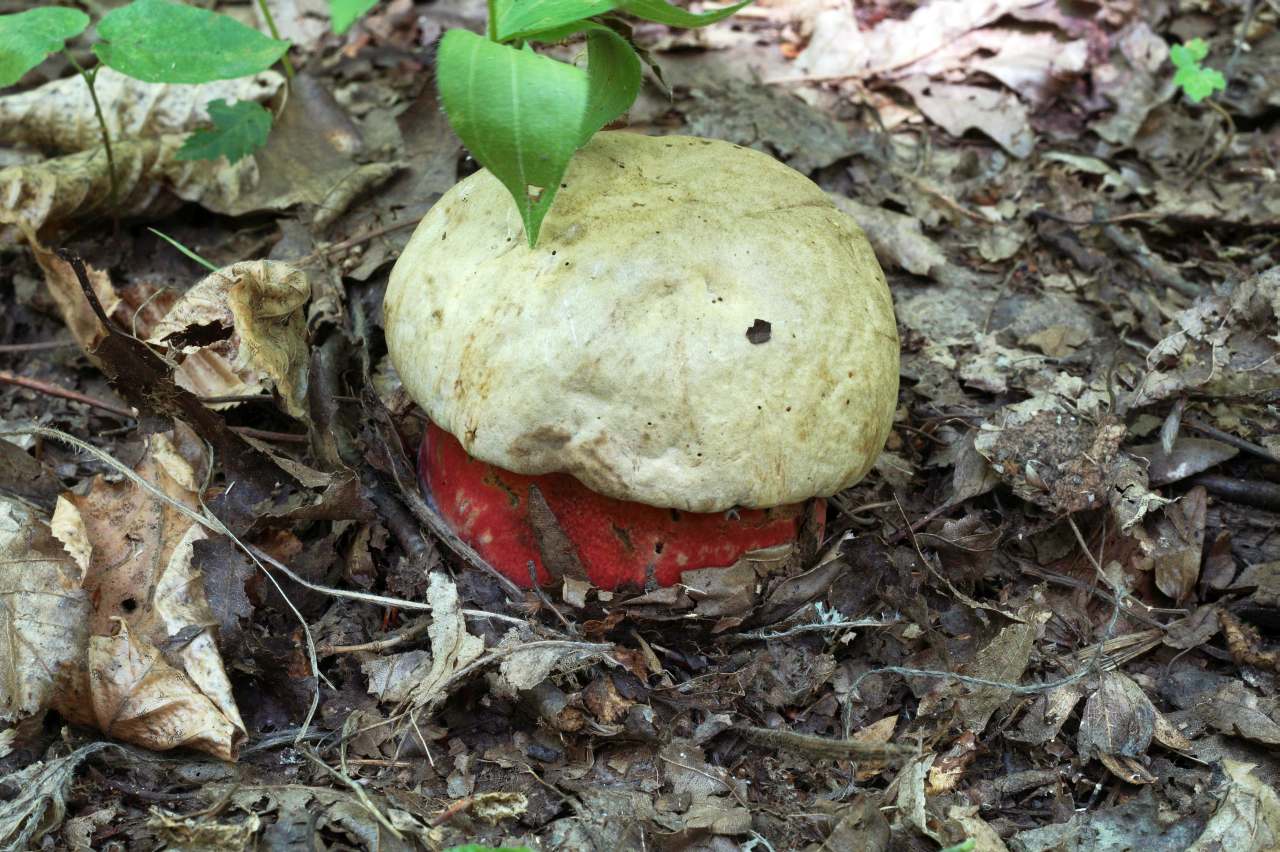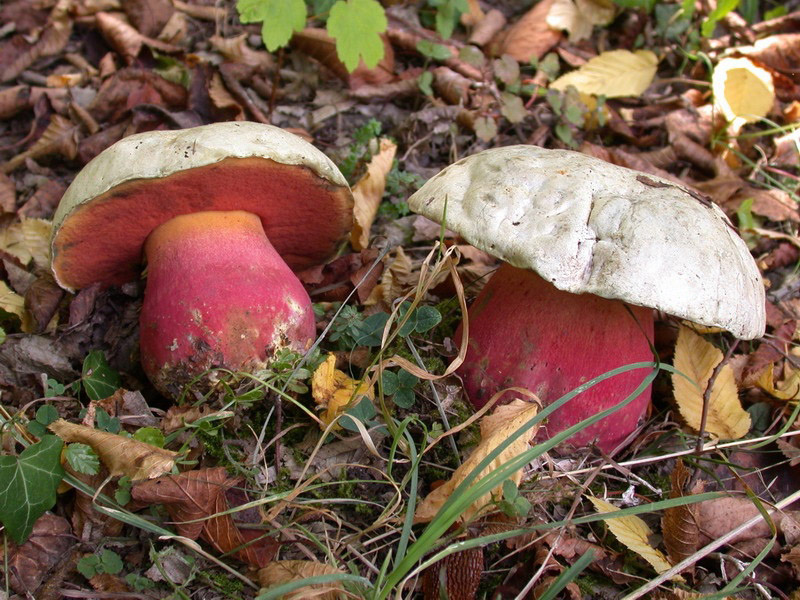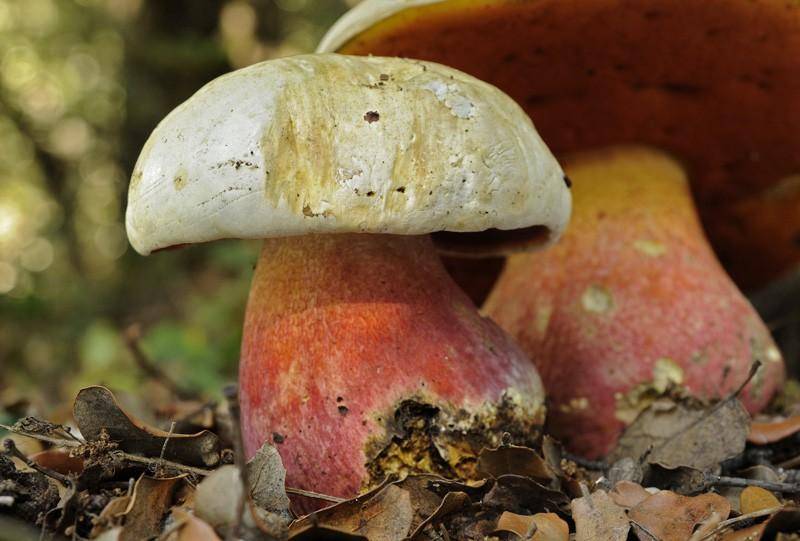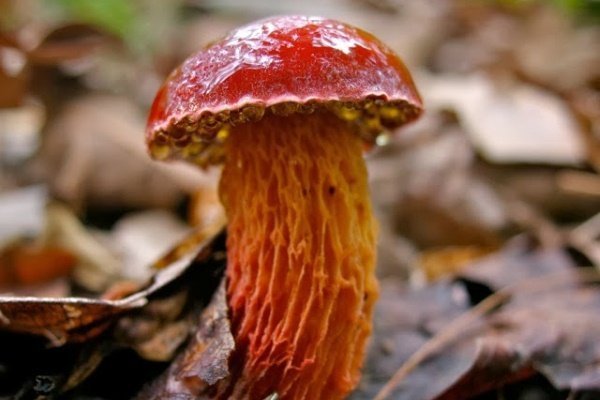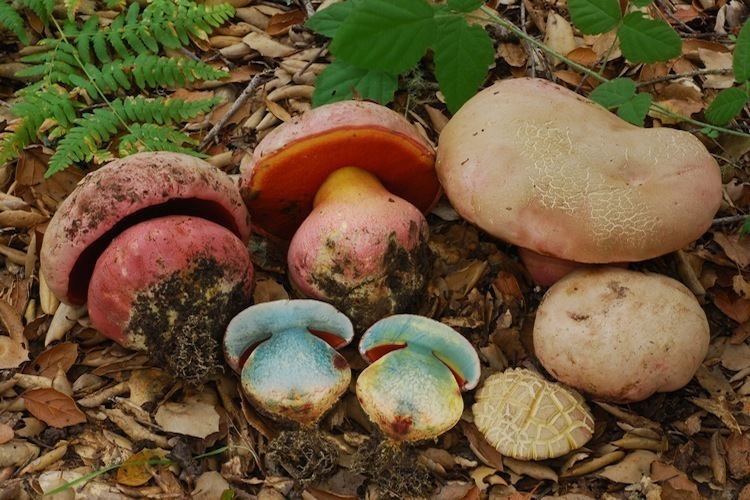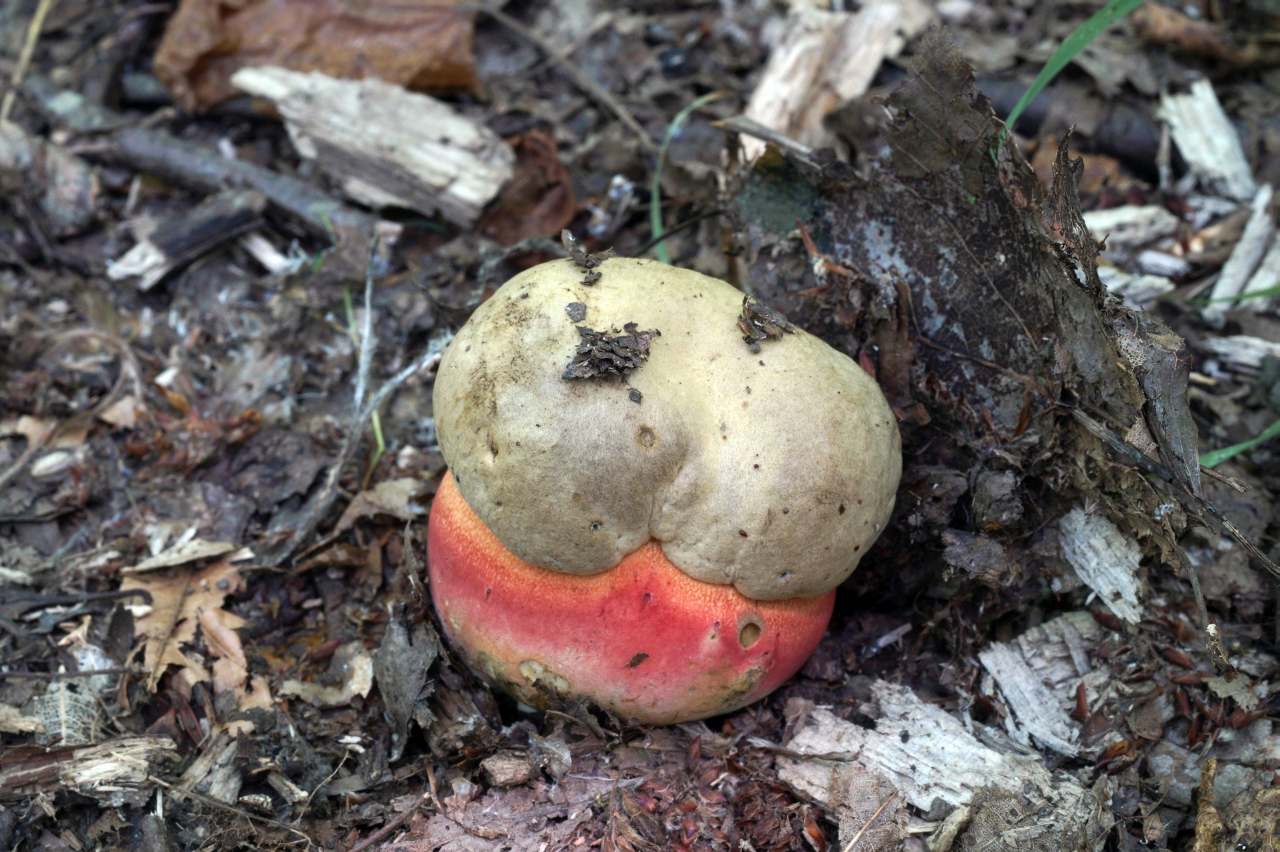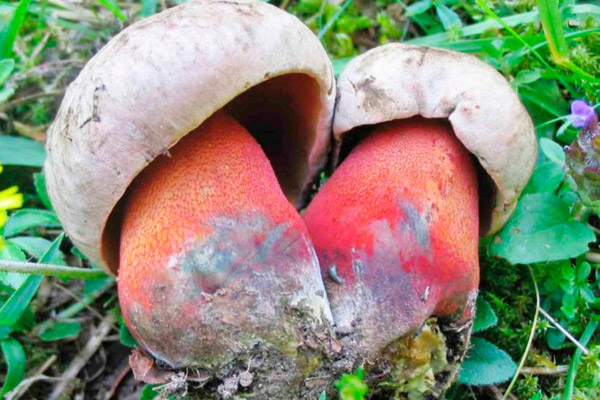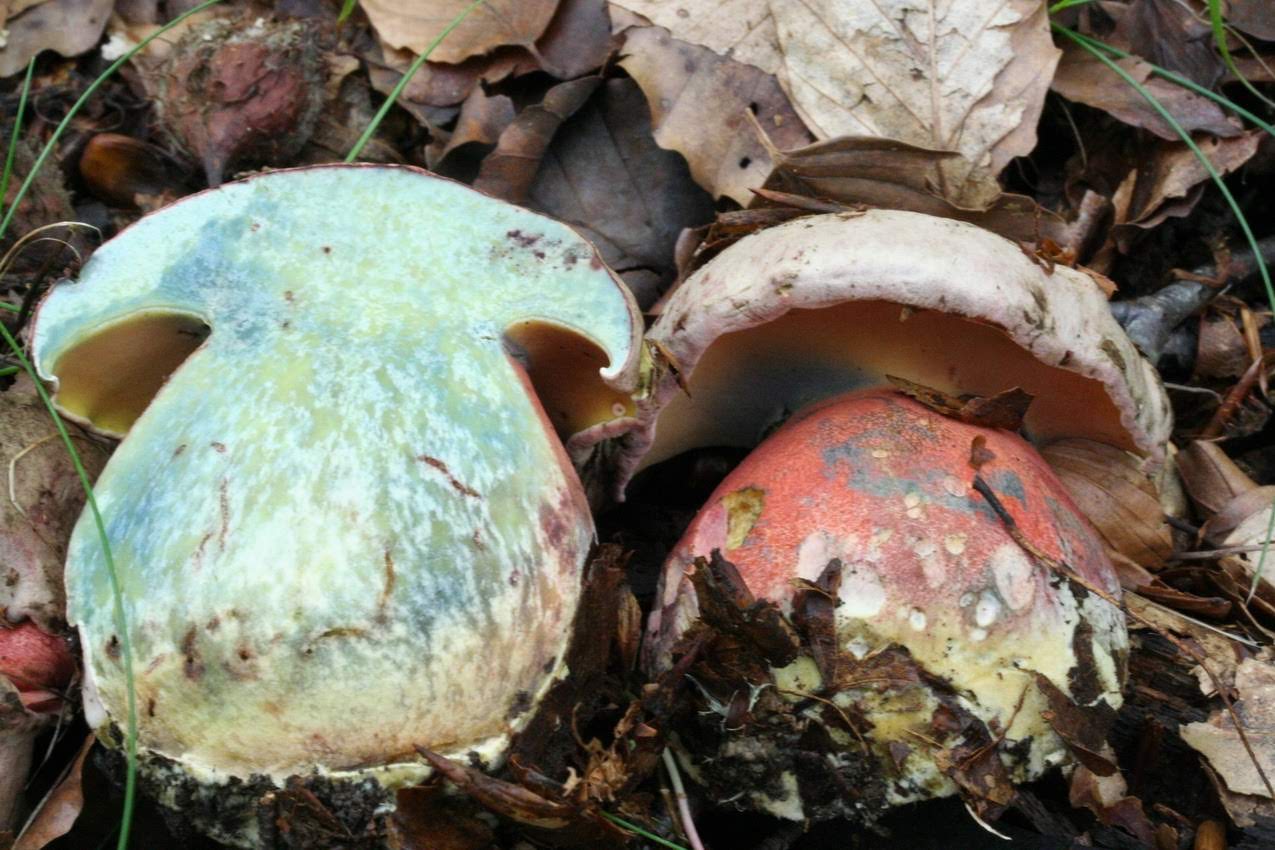Characteristics and description
Mushrooms of the genus Borovik or Boletus from the Boletaceae or Boletaceae family belong to the category of inedible or poisonous and are most often represented in our forests by two main species: the satanic mushroom and the false satanic mushroom.
| Comparison options | Satanic mushroom | False Satanic Mushroom |
| Latin name | Boletus satanas | Boletus splendidus |
| Toxic properties | Poisonous | Inedible |
| Head diameter | Up to 30 cm | 5.5-10.5 cm |
| Cap shape | Hemispherical or rounded-cushion and then prostrate | Cushion-shaped, convex, with sharp and protruding edges |
| Head surface | Smooth or slightly velvety, no moisture | Moisture-free, slightly felted or perfectly smooth |
| Coloring the cap | Most often whitish or grayish, but may be dirty.gray or olive gray, with a yellowish or ocher tinge and stains | Milky coffee or brown with a pinkish tint |
| Description of the pulp | White or yellowish color, with moderate bluing or redness at the cut | Delicate consistency, light yellow color, reddish or blue on the cut |
| Leg description | Not more than 15 cm long and up to about 9-10 cm thick, tuberous or barrel-shaped with a narrowing in the upper part, dense. The color in the upper part is yellowish-red, and at the base, the color is brownish-yellow. The presence of a mesh mesh pattern | Length no more than 8 cm with a diameter of 5 cm. Cylindrical shape with a pronounced narrowing at the base. The surface is yellowish, at the base with a carmine shade, covered with a fine mesh pattern |
Practical benefits
Satanic boletus, growing under "favorite" trees, forms a special tissue - fungus root. In science, it is called mycorrhiza. A certain form of mycorrhiza is capable of braiding the root system of trees, forming a kind of cover. Poisonous boletus, entangling tree roots, penetrates into the internal structures of the wood. Boletus is able to merge with the tree, it develops and grows inside the roots.
Mycorrhiza is of economic importance. Scientists have learned to isolate microbiological inoculants from it. They are used in agriculture to increase yields. Thanks to mycorrhiza, plants receive maximum nutrients and moisture from the soil.
In our country, the attitude to the satanic mushroom is unambiguous - it is poisonous, and therefore it is not subject to collection, especially cultivation. Its application at the microbiological level is limited by the framework of laboratories and is not widespread.
Primary processing and cooking recipes
After collecting mushrooms in the forest, they need to be processed on the same day. Be sure to clean up forest debris, remove wormy places and discard rotten fruits. Then soak for at least 1 hour to eliminate the bitterness.
Cooking
Cook a semi-white mushroom for at least 30 minutes in salted water. After that, it can be fried, marinated and frozen.
Pickling method
It is the pickled semi-white mushroom that is considered the most delicious. For cooking you need to take:
- boletus - 1 kg;
- water - 0.5 l;
- vinegar - 100 ml;
- onions - 150 g;
- sugar - 1 tbsp. l .;
- salt - 2 tbsp. l .;
- laurel leaf - 1 pc.;
- cloves - 3 pcs.;
- peppercorns - 5 pcs.
How to pickle:
- Mushrooms are boiled with laurel leaves and pepper for half an hour.
- Remove the fruits, and add salt, sugar, cloves to the broth.
- After boiling the composition, pour in the vinegar and put the fruits.
- Remove from heat after 15 minutes.
- Lay out the bottom of the cans with onions, then spread out the mushrooms and pour over the boiling marinade.
Store closed jars in the refrigerator on the bottom shelf.
Frying
It is easy to prepare fried mushrooms, for this you will need:
- boletus - 500 g;
- onions - 200 g;
- vegetable oil - 50 ml;
- salt and pepper to taste.
How to cook a semi-white mushroom:
- The onion is chopped finely and fried in a pan over low heat with the addition of vegetable oil until it becomes transparent.
- The pre-boiled mushrooms are cut into equal pieces and added to the pan.
- After 10 minutes, salt and pepper the mixture. Fry for at least 15 minutes.
These fried mushrooms are best served with boiled potatoes.
Salting for the winter
For cooking you will need: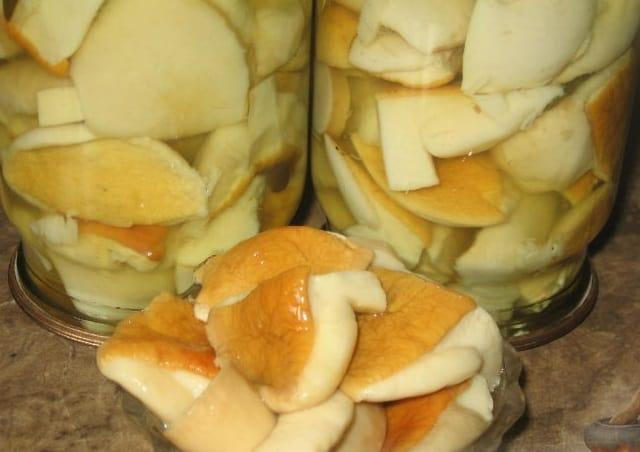
- lemon boletus - 1 kg;
- garlic - 10 cloves;
- salt - 200 g;
- horseradish - 2 leaves;
- peppercorns - 5 pcs.;
- allspice - 5 pcs.;
- dill - 5 umbrellas;
- vegetable oil - 1 tbsp. l.
Salting process:
- Mushrooms must be pre-soaked and boiled. Cut them into small pieces.
- The bottom of the prepared jar is laid out with horseradish leaves.
- Add half of all ingredients (except oil) and a pinch of salt.
- Lay out the boletus in layers, sprinkle each with salt.
- Put the remains of garlic, pepper and dill in the middle of the bottle.
- Continue alternating mushrooms and salt until the end of the fruit.
- There should be about 3 cm of free space on top. Cover with a sheet of horseradish and sprinkle with salt.
- Pour the oil over the leaves. Close the lid and place in a cool place for 15 days.
Drying
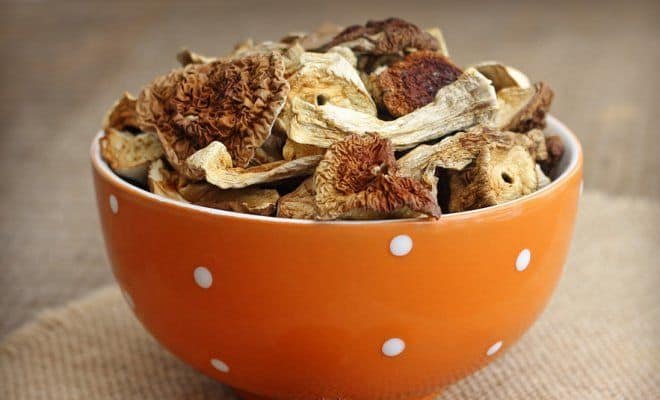 To dry the semi-white boletus, you will need an oven, because they will dry for a long time on the street. If the crop is harvested in summer, and the weather is hot, then you can string the fruits on a string, cover with gauze and dry in the sun in a well-ventilated place.
To dry the semi-white boletus, you will need an oven, because they will dry for a long time on the street. If the crop is harvested in summer, and the weather is hot, then you can string the fruits on a string, cover with gauze and dry in the sun in a well-ventilated place.
Important! Before drying, the mushroom is not soaked, washed or boiled. It is enough to clean the fruits of debris and remove spoiled places
The boletus is cut into equal pieces so that the process runs evenly. They are dried at a temperature of 50 degrees with the oven door ajar. Ready-made mushrooms are soft, elastic to the touch, do not emit liquid and do not crumble into dust
It is enough to clean the fruits of debris and remove the spoiled places. The boletus is cut into equal pieces so that the process runs evenly. They are dried at a temperature of 50 degrees with the oven door ajar. Ready-made mushrooms are soft, elastic to the touch, do not emit liquid and do not crumble into dust.
Interesting Facts
Some mushroom pickers argue that the satanic pain can be called so because it knows how to perfectly disguise itself as edible species (boletus, poddubovik, etc.), as Satan changes his devilish appearance to the image of a pious one.
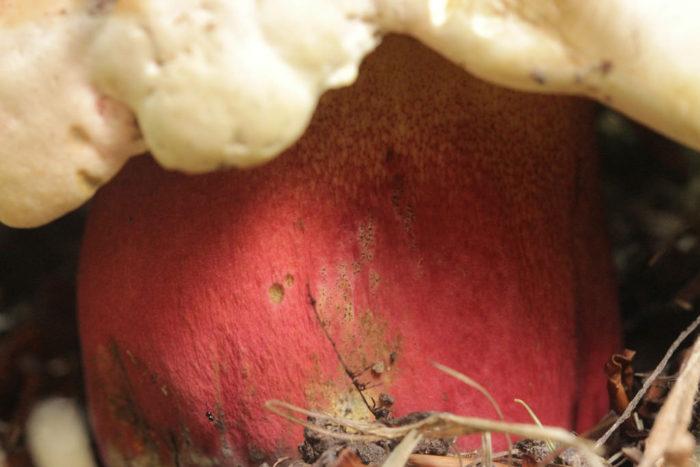 In France and the Czech Republic, the satanic mushroom is conditionally edible and allowed for consumption. It is considered a gourmet variety that can be cooked as usual. It is recommended to make soups, sauces, pickles and marinades from it.
In France and the Czech Republic, the satanic mushroom is conditionally edible and allowed for consumption. It is considered a gourmet variety that can be cooked as usual. It is recommended to make soups, sauces, pickles and marinades from it.
Mikhail Vishnevsky, a well-known author of many books on mushrooms, claims that “Boletus satanas has long been mistakenly considered poisonous. Now, after boiling, this mushroom can be eaten without fear, using in various recipes. "
It is noticed that worms eat all mushrooms, except for poisonous ones
It is worth paying attention to the fact that in nature neither animals nor worms consume deadly plants. This information will help determine the edibility of mushrooms at the time of harvest and will help distinguish them from other species.
Despite the polarity of opinions on the edibility of the satanic mushroom, it is always worth remembering that this species is extremely insidious. Even after prolonged and correct heat treatment, one cannot be completely sure that all toxins and poisons are neutralized, and the fruit body is absolutely safe for consumption. Do not risk your health, be extremely careful and selective during a quiet hunting!
The appearance of the mushroom
The satanic mushroom looks similar to boletus. A large-sized cap reaches 30 cm in diameter, in young specimens - 7 cm. The color of the cap is gray-white with a yellow or green tint.The skin is smooth, pleasant velvety, dry.
The leg is large, 6-18 cm. The palette is presented from gray to brown-pink, almost red. It resembles a turnip in shape. The leg is covered with a coarse-mesh pattern. It is dense in structure, widened downwards, tapers upwards. The satanic mushroom has a tubular hymenophore.
The difference between young and old specimens is the smell. The young have a pronounced pleasant, mushroom, old mushrooms smell like rotten vegetables.
The Satanic mushroom resembles the traditional white mushroom, which is why they are often confused. It is poisonous, provokes gastrointestinal upset. Toxins do not lose their qualities even after processing and prolonged cooking.
Simple options
For the construction of the hearth, you can use a variety of materials: bricks, large pebbles, boulders, various types of natural stone, concrete blocks, paving slabs. The most common option is using the most suitable material for this, brick.
For this role, both cinder block and ordinary bricks are suitable. It should be remembered that for laying out the walls it is better to use the widest possible brick of large sizes, capable of keeping heat well inside the hearth. For this, when laying out the hearth with perforated bricks, place holes in it towards the ground, and not parallel to it.
The amount of material required in order to make a hearth in the country is determined by the size of the fireplace being erected and its purpose. For example, if you plan to grill food on the hearth, then the hole under the hearth should be made deeper, which means that more material will be needed for its construction.
You can make a hearth for a fire much faster. Firstly, a lot of country or courtyard metal hearths are offered. All you need is a platform on which you put a metal fire pit.
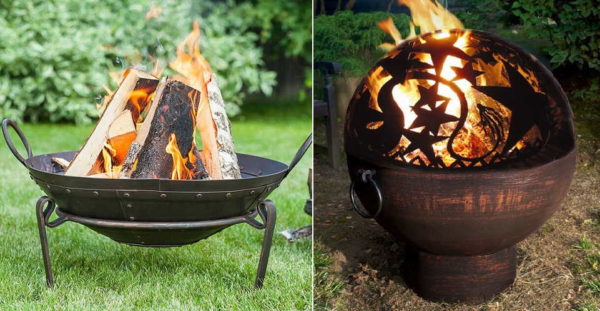
A metal bowl is a quick way to decorate a campfire site
A very similar option is a concrete fire bowl. They are cast in different sizes, they are round or square. You can do exactly the same yourself, but you will have to wait at least a month. And you put the finished bowl, and you can use it.

Fast and hassle-free
Features of the view
The mushroom belongs to the Boletov family, the Borovik family. Therefore, his description often coincides with the characteristics of other representatives of this genus.
Satanic mushroom
Nevertheless, Satan has a number of individual morphological differences.
Appearance and photos
In appearance, this mushroom can be easily confused with boletus. You can assess the similarity by looking at the photo. The hat is hemispherical or pillow-shaped. Over time, it unfolds and takes on a prostrate shape. The diameter of the hat varies from 8 cm to 25 cm.
Mushroom cutaway
Some sources claim that the cap can reach up to 30 cm. Its surface is smooth or velvety, depending on the growing conditions. Most often it is dry, but can be slippery in wet weather.
The color scheme of the hat is varied:
- gray-white;
- gray;
- dark gray;
- gray with olive tint;
- gray-yellow;
- gray-green.
Less common are specimens with pink and olive streaks on a gray background of a hat. The leg grows up to 15 cm, its diameter is from 3 to 10 cm. Initially, it has the shape of an egg or a ball, but over time it becomes tuberous, similar to an uneven barrel or turnip. The leg is brown below, bright pink in the middle, and yellow-red above. A mesh pattern is visible over the entire surface.
The pulp of the mushroom is dense. It is often white with a yellowish tint. Sometimes there are specimens with lemon-colored pulp.
Morphology
The most striking specific feature of Satan is its chemical composition. Other representatives of the Borovik family remain white or turn blue on the cut, while the site of Satan's damage turns red. Another striking feature is the specific smell of the pulp.
Young mushrooms have a weakly pronounced spicy smell, and adults smell strongly of rotten onions. In addition, the surface of his hat is usually dry, which is not typical for most of his relatives.
Morphological features of the fungus
The satanic mushroom is classified as a tubular mushroom. Its spores are housed in short tubes under the cap. At first they have a yellow tint, but as they grow older, they change their color, becoming greenish, then brown, eventually acquiring a bright red hue. The spores are very small and roundish.
Distribution in Crimea and other areas
Satan loves the sunny edges of coniferous and deciduous forests, as well as calcareous soil. Most often it is found under oaks, lindens, chestnuts. The first representatives appear in June, and the peak of their growth occurs in July-August. At the end of September, the mushrooms disappear.
Satanic Mushroom Pulp
Satan is spread in the following places:
- Southern Europe;
- south of the European part of Russia;
- Caucasus;
- Near East;
- Primorsky Krai.
Some mycologists add Crimea to the above places. Local residents confirm the presence of mushrooms in the Crimean lands. However, according to official research, they have not been recorded in Crimea. This can only be explained by the rarity of the species and its small distribution. After all, the Crimean territory is the ideal soil for this species.
Eating
Satan belongs to conditionally edible mushrooms. In its raw form, it is definitely toxic, as it contains the venom of muscarine.
Long-term heat treatment weakens the toxicity somewhat, but does not completely eliminate it.
Residents of some countries, for example, the French, Czechs, eat Satan. They are pre-soaked for 10-12 hours, and then stewed the same amount. Mycologists say that after such processing, mushrooms can only cause an upset stomach.
Eating the mushroom
But is it worth the risk of trying them? Moreover, after such a long cooking, the taste is very doubtful. And the nasty putrid smell during cooking only intensifies, acquiring a sickening character.
Application
In some countries, this species is allowed for culinary use. If the first symptoms of poisoning are noticeable (nausea, vomiting, severe stomach pain, dizziness, numbness of the extremities), you should immediately go to the emergency room. The plant is more actively used for medical purposes and economic activities. Due to its rich vitamin and mineral composition, it is used as a fertilizer.
Inoculants and phosphorus are released during mycorrhiza. They are used to increase the fruitfulness of many agricultural crops. Thanks to active substances, the absorption of useful minerals from the soil improves, and the amount of liquid increases. Plants become powerful, more resistant to environmental influences.
In cooking
In France and the Czech Republic, the satanic mushroom is conditionally edible and allowed for consumption. It is considered a gourmet dish. However, even a ten-hour heat treatment does not guarantee complete elimination of toxins.
Before use, the product is soaked for a long time and boiled for 10 hours. After processing, the preservation of taste is a big question. A number of reference books describe the toxic effects of these eukaryotes. Jera Udu claims that 10 g of raw product can kill an adult. Death occurs as a result of paralysis of the central nervous system, suffocation. It is better to give up the use of the satanic mushroom in favor of the known edible species.
In medicine
The product is actively used in homeopathy. The medicine is called Satanic Mushroom. The essence of the application is to use a small amount of poison to immunize the body, treat cancer. However, homeopathy belongs to unconventional methods of treatment, therefore, the positive effect is questioned.Exceeding the dosage or taking the drug by allergy sufferers, people suffering from pathological abnormalities in the work of organs and systems, can cause poisoning and death.
In traditional medicine, the mushroom is used for the manufacture of pain relievers, tranquilizers. Some substances secreted from the eukaryote have a paralyzing effect on the nervous system. This makes it possible to create effective means for combating epileptic seizures, hysterical seizures in schizophrenics and other neurotic pathologies.
Gall mushroom. Description
Like a real porcini mushroom, gorchak has a leg that grows up to 3-12.5 cm in height, moreover, its thickness reaches about 1.5-3 cm.The main part of the fruiting body has a cylindrical or clavate shape with a swollen, fibrous base ... As a rule, the stem at the top is creamy yellow or whitish in color and on its surface there is a pronounced pattern in the form of a blackish or brown mesh. The entire part of the fruiting body is filled with whitish pulp and looks massive.
False porcini mushrooms have a number of similarities with congeners. Bitters have a hemispherical cap, which with age acquires more outstretched and rounded-cushion-shaped features. Above, part of the fruiting body is fine-fibered, slightly pubescent. During heavy rains, the cap may become slimmer and more sticky. Its color ranges from yellowish brown to dark brown and gray ocher.
Gorchak cutaway

The main feature of the false porcini mushroom, with which it is easy to identify, is the darkening of the pulp when cut. So, the inner layer of the mushroom becomes reddish, has a faint smell and bitter taste. Due to the fact that the pulp is not wormy, it looks quite presentable and often confuses novice mushroom pickers. The whitish tubules, which in the future acquire a pink or dirty pink color, grow to the stem. The pores are angular and rounded; they turn reddish or brown when pressed.
In the gall fungus, the spore powder can be pink-brown or pinkish. The spores themselves are smooth to the touch and grow in the form of ellipses.
Description of the false satanic mushroom
The cap diameter of this mushroom can be up to 10 centimeters. The shape of the cap resembles a convex pillow; there may be a sharp or protruding edge. The hat is covered with a cappuccino-colored skin, but over time it can darken to a brown tone, with a pink tint visible. The surface of the cap is dry, there is a small tomentose coating, and overripe specimens become naked.

The flesh of the false satanic mushroom is tender, light yellow in color. On the cut, the flesh turns blue. The tubular layer is grayish yellow. In young specimens, yellowish pores are noticeable, which grow red with age. Spore olive powder.
The height of the leg is 4-8 centimeters, with a width of 2-6 centimeters. Its shape is cylindrical, and the base is narrower. At the base, the leg is reddish, and yellowish along the rest of the length. A thin purple-red mesh is visible on the leg.
Places of growth of false satanic mushrooms
These mushrooms are common in beech and oak forests. They prefer warm, bright places. False satanic mushrooms are a rare species. They bear fruit from summer to autumn.

The inedibility of false satanic mushrooms
False satanic mushrooms cannot be eaten, they are not considered poisonous only because the toxins that make up their composition are still undefined. In this regard, false satanic mushrooms are considered simply inedible.
Other mushrooms of this genus
Borovik le Gal is a poisonous representative of the genus, named after the mycologist Marcel le Gal. The cap of this mushroom is pinkish-orange in color. At first it is convex in shape, but in the process of growth it comes to prostrate. The surface of the cap is smooth. Its diameter ranges from 5 to 15 centimeters.The leg of the boletus le Gale is swollen, rather thick, 8-15 centimeters high and 2.5-5 centimeters thick. The color of the leg matches the cap, but there is a reddish mesh in its upper part.
Boletus le Gal is numerous in Europe. They grow mainly in deciduous forests. Form mycorrhiza with beech, oak and hornbeam. They prefer alkaline soils. Fruiting in summer and early autumn. Boletus le Gal is poisonous, it is forbidden to use them for food purposes.

Satanic mushroom or satanic sick is considered a poisonous, and sometimes conditionally poisonous mushroom. The diameter of the cap of these large mushrooms reaches 10-20 centimeters. The shape of the cap is hemispherical. The color is ocher-white or grayish-white. The hat is fleshy and dry. The length of the leg is 6-10 centimeters, and the diameter reaches 3-6 centimeters. The leg is yellow with a red mesh.
Satanic mushrooms have a nasty smell, especially in older specimens. They grow in deciduous forests and light oak forests. Preference is given to calcareous soil. Satanic mushrooms can be found not only in oak forests, but also where beeches, hornbeams, lindens, edible chestnuts and hazel trees grow. With all these trees, the satanic mushrooms form mycorrhiza. They are widespread in Southern Europe, Russia and the Middle East. Fruiting from June to September.

First aid for mushroom poisoning
Signs of mushroom poisoning
The first signs of poisoning may appear more than 2 hours after a meal. Be vigilant and do not ignore dangerous symptoms.
The first obvious symptoms are nausea and vomiting. Do not rush to turn off - this is not overeating, but rather check your pulse / temperature to make sure of the cause of the ailment. After poisoning, a person has a weak pulse and a sharp increase in body temperature. After some time, a decrease in performance begins, a feeling of coldness in the limbs, sharp pains in the abdomen.
Poisoning can provoke an exacerbation of diseases of the gastrointestinal tract, which were in remission.
Severe abdominal pain alternates with diarrhea. In severe cases, a person will have to visit the toilet more than 15 times a day.
When poisoned with overly toxic foods (such as the satanic mushroom), a person can develop delusions, hallucinations, and a state bordering on insanity. Moreover, a toxic fungus can cause the development of a serious disease - botulism. The disease is fraught with permanent headache, difficulty in swallowing, blurred vision, dry mouth, persistent nausea and vomiting, stool disturbance and frequent seizures.
If such symptoms appear, you should immediately consult a doctor in order to get timely help and prevent the infection from spreading throughout the body.
First aid
First aid for mushroom poisoning consists of a complex of the most simple manipulations. The first rule is to call a doctor. The faster you do this, the less you will have to writhe in pain and endure unpleasant changes inside your own body. There is no need to be heroic and go to the hospital on your own. It is better to stay in bed and try to relax as much as possible before the ambulance arrives. Get into a comfortable lying position, drink activated charcoal and try to consume as much healthy liquid as possible (filtered cold water, cold strong tea). If all actions are performed correctly and in a timely manner, then the competent actions of the doctor will put you on your feet the next day.
If the mushroom was overly toxic, then the treatment may take several days or even weeks. Take care of yourself and be as careful as possible on your daily food journey.
How to distinguish from edible oak trees?
So, if there is a need to distinguish a satanic mushroom from an edible boletus, this can be done quite simply.
First, edible mushrooms will never have a bright red stem or cap. This is the privilege of exclusively poisonous mushrooms. Therefore, if you see a red tint, then know that you urgently need to bypass this mushroom.
Also, be very careful as this mushroom is likely to be toxic. In order to understand whether a mushroom is poisonous or not, you need to cut it exactly in half. Look at the pulp. If it is white and smells good, then the mushroom is most likely edible. However, if the color is not natural, at the same time, the smell is not the most delicious and pleasant, this means that most likely you have found a mushroom that should never be eaten.
This means that you are putting your health and the health of your loved ones in danger, so before cooking, check the contents of your basket very carefully again.
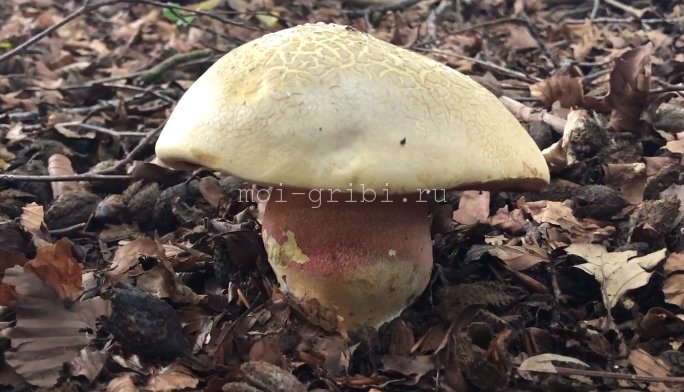
First aid for mushroom poisoning
So, you realized that you had mushroom poisoning. In this case, you can not self-medicate, you must consult a doctor. However, before the ambulance arrives or you yourself go to the hospital, you need to take a number of sequential actions to improve the condition of the poisoned.
First, try to induce vomiting. To do this, just bend over the toilet and slowly put two fingers in your mouth, try to press on the root of your tongue. If you do this intensively, you can induce a vomiting reaction, allowing you to spit out all the contents of the stomach. This measure is necessary, because if it is not taken in a timely manner, the body will not have time to absorb a large amount of toxins.
However, if this method did not help you (relief does not come) or you cannot call to work, in this case, you can resort to the next method.
You need to gently lay the patient on their side. That being said, give him plenty of plain water. Make him drink water until he starts to vomit
It is very important that the water dissolves the toxic substances and takes out more of them due to urination or vomiting.
Then, wait for the ambulance to arrive. After that, follow the doctor's recommendations. Most likely, the doctor will ask you to go to the hospital, where the patient will undergo gastric lavage, and also ask you to stay under the influence of droppers for a while in order to restore the body from the shocks received. After all, poisoning is, in any case, a great stress for the body.
Signs of mushroom poisoning
How to understand that the poisoning has occurred? When poisons start to act and what to do to prevent symptoms. And most importantly, how to help the body recover?
So, in order to save your body, and most importantly, to avoid serious consequences, you must first of all pay attention to the symptoms. As a rule, they begin to appear after an hour from the moment you ate mushrooms.
- You suddenly start having bouts of nausea or vomiting. Perhaps this is a faint feeling, or perhaps a real urge. However, it is not recommended to keep vomiting in yourself, on the contrary, the more eaten out of you, the less damage to the body will be caused.
- Dizziness and headaches. Yes, poisoning is very often accompanied by dizziness. Therefore, if you feel that the ground is slipping from under your feet, but you can’t concentrate poorly on what is happening around you, you feel ringing in your ears or simply pulsating risks, most likely this is also another sign of poisoning.
- You start to feel hot and cold. Chills very often accompany mushroom poisoning. Sweat starts flowing from you and you want to undress, then you want to wrap yourself up in the warmest blanket.
- Weakness. You are unable to be active, stand on your feet, you want to lie down and sleep. However, in no case should this be done, since you need to control the state of your body.
- You pass out.You disconnect from what is happening for a while, then come to your senses again. As a rule, this is often the case when it comes to poisoning. In order to prevent this phenomenon, it is necessary to call a doctor.
There may be other symptoms that are specific to your body, since everything is individual. For example, many people who were poisoned observed an upset stomach and said that they felt severe pain in the stomach area, it arose as a result of the fact that toxic substances began to be absorbed in the stomach wall, which caused unpleasant sensations.
Either way, listen to your body. If you think that something is going wrong, then in such a situation, of course, see a doctor as soon as possible. And let your poisoning not be confirmed, but in this case it is better to foresee everything in advance, and try to protect yourself, than to wait for the development of events, which may be the most inappropriate.
Satanic mushroom tastes good. Satanic mushroom. Edible or Poisonous? The difference between the edible and the poisonous mushroom of Satan and why it is called that Photo
Satanic mushroom has many opinions about its toxicity or edibility.
But it is important to understand what kind of risk you are taking. If in doubt about its edibility, then do not take and do not eat
Some Europeans even cook it by soaking it for 10 hours. It is possible to distinguish an edible mushroom from a poisonous one.
In case of poisoning, you must immediately call an ambulance and provide first aid, causing vomiting to clear the stomach.
The satanic mushroom is often confused with the porcini mushroom. But, unlike him, the satanic mushroom is poisonous. The people also call him the forest devil. Latin name: Boletus satanas.
This mushroom is considered conditionally edible in the specialized literature. But at the same time, it is possible to take it for food without fear only after a long soaking and cooking (10 hours). After such culinary procedures, the organoleptic features of the pulp lose their edibility. Thus, if the mushroom picker neglects this cooking procedure, he may be poisoned.
Poisonous toxins and signs of poisoning
You should know that signs of departure appear when eating a satanic mushroom without preliminary heat treatment, since the pulp of the mushroom is poisonous.
Signs of poisoning: vomiting, diarrhea, nausea, gastrointestinal disorders. When these mushrooms are consumed without treatment, a person begins to vomit constantly. A person can also experience confusion, paralysis of the limbs, headaches.
Outwardly, this mushroom is very similar to pink boletus. But at the same time, poisons of the muscarinic series appear and are deposited in the tubular elements of the satanic mushroom. For sending, 50 grams of the mushroom is enough. According to its structure, this mushroom is biologically classified as a boletus group. Gradually grows quite impressively. In some mushrooms, the diameter reaches 40 cm. The cap of the mushroom is distinguished by a pillow-like structure with dense skin on a smooth outer surface.
A spongy substance, dense to the touch, is located on the inside of the cap. On the upper side, the mushroom is colored brown, olive or green. The whole mushroom feels velvety to the touch.
The leg of the mushroom is also very similar to other mushrooms from the boletus family. To the junction with the cap, the massive base is slightly reduced. The traditional height of the mushroom is 20 cm, and the diameter of the stem can be up to 12 cm.
You can recognize the mushroom in this way - if you cut the leg, then first a blue color appears, and then a bright red. In addition, the satanic mushroom has a special smell, like a rotten onion. But if the mushroom is young, then there may be no smell. If, after cutting the leg, it turns blue in 3-5 minutes, then this mushroom can be thrown away.
In an edible mushroom, the flesh on the cut always remains white. Habitat of the satanic mushroom Grows in mixed, coniferous and deciduous forests. Most often in the southern regions.The fruiting period lasts from July to September. Prefers soils with a lot of lime. Divided into small families. Mycorrhiza forms with hornbeam, linden, oak, hazel, chestnut, beech.
Edible or not?
Experts, despite the conditional edibility determined by biologists, with proper preparation, do not recommend risking health, since the amount of poison in a satanic mushroom cannot be determined at home.
The World Health Organization has concluded that even eating 10 grams of raw mushroom pulp can cause death of a person due to cardiac arrest and complete paralysis of the nervous system, which leads to the inability to breathe.
In case of poisoning, the following medical assistance is required: - rinse the stomach; - use a soda solution; - call a qualified doctor.
it is enough to just slightly press on the oak tree, and the place of damage will soon turn blue, and then turn black-brown, resembling a bruise on the skin of a person after a bruise. From this property the poddubnik also received one of its names "bruise". But this feature makes the color of his cap even less predictable: in some cases, it may even turn out to be black and brown with red and yellow edges.
The pedunculus leg has a barrel-shaped shape, which later turns into a cylindrical or clavate. The color is yellowish to a red "mesh", at the base it turns into a wine-red hue or even black-brown. Reddish spots can be found along the entire length of the legs, and greenish spots at the base.
The flesh of the mushroom is dense, without a pronounced odor, in the cap it is yellowish. The lower part of the leg is the same wine-red as the leg itself in this place. On the cut, it becomes blue-green, and then brown.

